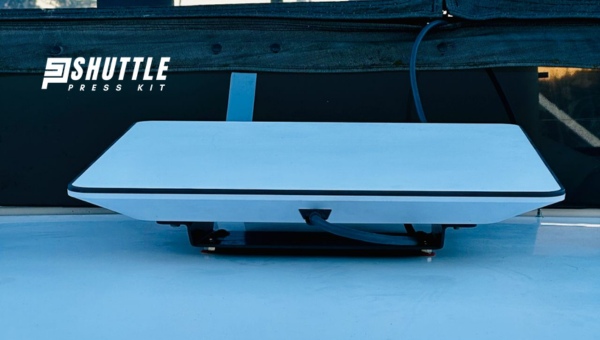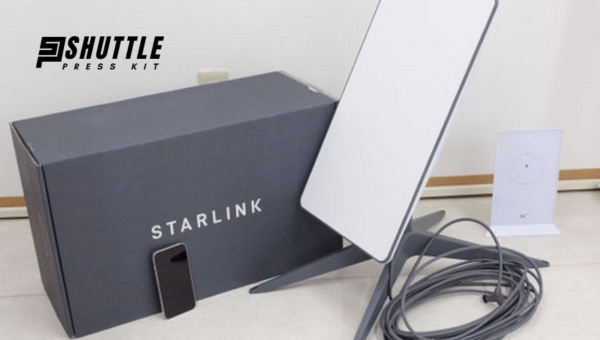Have you ever asked yourself, “Standard vs High Performance – Which Starlink Is Right For You?” If you’re scratching your head about which to pick for your internet needs, I’ve got you covered.
Imagine sailing on the internet waves at supersonic speeds or having a connectivity anchor so strong that even the thickest storm clouds can’t disrupt your online voyage. Now, let’s unlock the secrets of efficient surfing from home.
Choosing between Standard vs High Performance Starlink dishes boils down to what you’re looking for in an internet connection. If it’s about sticking to a budget and enjoying decent speed for everyday tasks, then a standard kit might be just fine for you.
But, if you live in an area with lots of obstructions like tall buildings or trees and crave super-fast downloads plus robust signal strength, investing in the high-performance version could be a game-changer.
| Feature | Standard Starlink Antenna | High-Performance Starlink Antenna |
|---|---|---|
| Suitability | Ideal for smaller sites with fewer users and lower bandwidth needs. | Perfect for businesses, heavy use cases, mobility/maritime applications, and operation in harsh climates. |
| Weather Resistance | Rated IP54, can handle rain and water spray; capable of melting snow at up to 40 mm/hour. | Rated IP56, offering enhanced resistance for extreme weather conditions; snow melt capability is increased to 75 mm/hour. |
| Operating Temperature Range | Operates within a temperature range of -22°F to 122°F. | Shares the same operational temperature range from -22°F to 122°F. |
| Field of View | Requires a clear view within a 100-degree field for optimal performance; may struggle with obstructions. | A wider field of view at 140 degrees allows it to better handle obstructions while connecting to more satellites. |
| Power Consumption | Consumes between 50-75 watts during normal operation. | Uses more power ranging from 110 to 150 watts due to increased capabilities. |
| Router Compatibility | Optionally provides a Wi-Fi 6 router that’s dual-band and mesh-capable, and includes an Ethernet cable for direct connectivity without needing an extra adapter. | Optionally provides a Wi-Fi 6 router that’s dual-band and mesh-capable, includes an Ethernet cable for direct connectivity without needing an extra adapter. |
| Internet Speeds (Download/Upload) | Offers download speeds ranging from 25-100Mbps and upload speeds between 5-10Mbps. | Comes with a Dual-band Wi-Fi router that supports Wi-Fi 5 and is mesh-enabled. An Ethernet LAN port requires an additional purchase of the adapter. |
Feature Differences Between Standard vs High Performance Starlink
The standard and high-performance Starlink antennas offer distinct features tailored to varying requirements, ranging from user capacity to resilience against environmental conditions. A primary difference is observed in the weather resistance rating; the standard variant is built with an IP54 rating, making it adept at handling rain and water spray.

In contrast, the high-performance version boasts an IP56 rating, indicative of its superior capability to withstand more severe weather conditions including higher volumes of snowmelt—up to 75 mm/hour compared to the standard’s 40 mm/hour.
Additionally, while both antennas maintain operations across a broad temperature spectrum (-22°F to 122°F), their field of view diverges significantly. The standard antenna offers a 100-degree perspective which obstructions could hinder, whereas its advanced counterpart expands visibility up to 140 degrees, allowing for a more robust connection by reaching more satellites simultaneously.
Another critical area of distinction lies in networking and power specifications which directly correlate with performance efficiency and user experience. Power consumption between the two models reveals a marked divergence; the standard antenna operates within a lower range (50-75 watts) that aligns with its intended use for smaller sites and fewer users.
On the flip side, the high-performance antenna consumes between 110-150 watts—justifiable through its enhanced connectivity speed (offering download speeds from 40-220Mbps compared to standard’s 25-100Mbps) and better support for dense user environments or specialized applications such as maritime or vehicular mobility solutions.
Networking capabilities also exhibit differences; while both versions are Wi-Fi compatible (with high-performance optionally supporting Wi-Fi 6), only the latter inherently includes an Ethernet LAN port for direct wired connections without requiring additional adapters.
This feature underscores the high-performance model’s inclination towards supporting complex networking setups demanded by businesses or power users seeking optimal internet reliability and throughput.
Also Read: Flat High-Performance Dish Unveils Powerful Starlink
Differences in Terms of Speed
The Standard antenna caters to basic usage with its download speeds ranging from 25 to 100 Mbps, suitable for simple online activities across fewer devices. On the other hand, the High-Performance antenna substantially amplifies performance, offering download speeds from 40 to 220 Mbps.
This makes it ideal for demanding internet use cases such as HD video streaming, large file transfers, and supporting multiple simultaneous connections without compromise.
In essence, while the Standard antenna is tailored for everyday web activities, the High-Performance variant is designed to cater to users with higher bandwidth needs, ensuring robust connectivity even under strenuous conditions.
Differences in Coverage and Field of View
When comparing the Standard vs High-Performance Starlink Antennas, a significant distinction lies in their capability to maintain a reliable satellite connection under varying conditions, primarily influenced by their respective coverage areas and field of view.
The Standard antenna offers a 100-degree field of view, catering well to smaller locations with fewer users and relatively open surroundings with minimal obstructions. This makes it a great choice for typical residential setups where the direct line of sight to the sky can be easily maintained. However, environments cluttered with buildings, dense foliage, or other obstacles may limit its connectivity options.
On the other hand, the High-Performance variant significantly expands this aspect by providing a broader 140-degree field of view. This enhancement allows the antenna to connect with more satellites simultaneously, greatly benefiting users in challenging settings such as urban landscapes densely packed with high structures or remote areas where natural obstructions are commonplace.
The increased range not only facilitates better overall service quality for businesses and power users who demand higher bandwidth but also ensures more stable connections suited for mobile or maritime applications and harsh climatic conditions. This distinction underscores Starlink’s effort to cater to diverse user demands by optimizing both antennas for varying degrees of exposure to potential signal interruption sources.
Mounting Options and Accessories
Mounting basically means how fun (or not) it will be putting up your new satellite dish so it sees as much sky as possible – this is key for keeping your connection smooth! Both dishes come with what you need to get started but they’re each a bit different.

The Standard kit tends to have simpler options good enough for setting up at home on roofs or flat areas where there isn’t too much interference from other stuff around at ground level.
However! The High-Performance model goes further by giving more heavy-duty options useful when conditions aren’t as friendly outside – say higher winds or having no choice but needing to get over taller ground clutter (like stacks-on-stacks-of-buildings type clutter).
On top of this, each has different accessories available that can make life either easier or fancier depending on what you’re after. So whether we’re talking mounts that help keep everything stable during crazy weather, or even just extras that help make sure cables stay neat – know that these components are part of what makes each kit fit differently into folks’ lives!
In closing holes shut on which version might suit someone best, think hard about what exactly needs doing online combined with where placing this shiny new tech friend outdoors before picking either a Standard versus High-Performance Starlink setup!
Starlink’s Portability Prospects
Standard Starlink dishes are known for being pretty handy. They’re a good pick if you need internet on the go or if you move around a lot. The kit is lighter and easier to set up anywhere you go. Think of it as packing up your Wi-Fi with your camping gear or taking it to a new home without much trouble.
On the other hand, High Performance Starlink dishes pack more punch but with that comes a bit more weight. They’re not so hard to move, but they’re definitely not as portable as the standard ones. It’s like having a powerful machine at home that you can still take with you in a pinch, but maybe not on every little trip.
So when asking myself which one fits best for someone who moves around all the time – I’d say go for standard. If your spot has heavy trees and buildings blocking the view of the sky, though, high performance might be worth that extra effort carrying it.
Comparing Costs – The Best for Your Buck
When examining the financial implications of choosing between the standard and high-performance Starlink options, it’s crucial to delve into the initial investment and ongoing expenses associated with each. The standard package presents itself as a more budget-friendly option at $599 for the hardware, designed to cater to residential customers seeking reliable internet service without breaking the bank.
The monthly service charge further adds $110 to this cost, making it a viable option for users with average connectivity needs. This choice strikes a balance between performance and affordability, aiming to cover most user requirements under typical conditions.
On the other hand, opting for the high-performance version requires a substantial upfront financial commitment of $2500, positioning it as an alternative for those demanding enhanced network capabilities in less accessible or more challenging regions. Despite this significant initial outlay, it’s noteworthy that the monthly fee remains consistent with the standard offering at $110.
This implies that while users incur higher costs initially due to superior hardware capable of enduring extreme weather conditions and connecting over wider areas, there isn’t an increase in ongoing costs.
Therefore, when evaluating both options from a cost perspective, potential subscribers must weigh their specific connectivity needs against these investments to discern which variant aligns best with their internet usage patterns and geographical circumstances.
Also Read: What is Starlink’s Aviation Service: Elevate Your Experience
FAQs
What is the difference between Starlink and high performance?
Starlink provides satellite internet service, and the main difference lies in the service tiers offered. The standard service caters to everyday internet needs, such as browsing and streaming video. In contrast, Starlink’s high-performance tier is designed for users requiring higher bandwidth and lower latency, suitable for more demanding tasks like competitive gaming or high-definition video conferencing.
What is the difference between Starlink standard and priority?
The key distinction between Starlink standard and priority services pertains to data prioritization. Standard users may experience slower speeds during peak times due to network congestion, whereas priority access ensures users maintain higher speeds by prioritizing their data traffic even when the network is busy.
What is the difference between standard and standard actuated Starlink?
The variation primarily revolves around equipment capabilities. A “standard” service uses traditional user equipment setup suitable for most scenarios. Meanwhile, “standard actuated” might refer to an advanced setup potentially implying technologies that enhance signal acquisition or tracking, thus offering improved performance under certain conditions like mobility or obstructed environments though specific references may be speculative as official details can vary.
What is Starlink standard plan?
The Starlink standard plan refers to their basic subscription option providing satellite internet access with speeds sufficient for regular household usage including browsing, streaming videos in HD, attending video calls etc., while balancing affordability with performance. It’s crafted for average consumers needing reliable internet without requiring excessively high bandwidths of more premium options.
Also Read: Starlink Dish Placement: Optimal Tips for Perfect Setup
Conclusion
When considering the dichotomy between Standard vs High Performance counterparts, the choice fundamentally boils down to individual needs and circumstances. For users in remote locations or those hungry for speed and unwavering connectivity, High Performance Starlink presents an unparalleled option, albeit at a higher cost.
Its enhanced capabilities in adverse weather conditions and superior bandwidth make it a compelling choice for professionals relying on stable internet or businesses operating in remote areas. Conversely, Standard Starlink offers a more budget-friendly solution that still exceeds traditional broadband services in many regions, making it ideal for average households or users with moderate internet needs.
Ultimately, aligning your selection with your connectivity demands, geographical location, and budget will guide you to the most fitting Starlink service.
